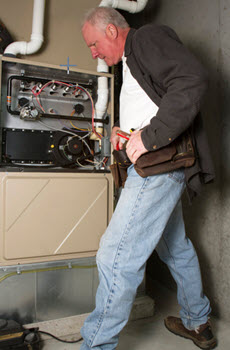 As of July 3, 2019, the Department of Energy will implement a new residential furnace fan regulation. The adoption of modern standards creates a significant change in fan motor manufacturing. The result is that every US household will eventually benefit from high-efficiency motors.
As of July 3, 2019, the Department of Energy will implement a new residential furnace fan regulation. The adoption of modern standards creates a significant change in fan motor manufacturing. The result is that every US household will eventually benefit from high-efficiency motors.
The DOE is pushing for this regulation to help reduce the energy consumption and carbon pollution in the country. After this new rule becomes the norm, the average furnace will experience a drastic decrease in energy use.
In most homes, the furnace accounts for 10% of the annual energy consumption. After the scheduled implementation, this energy use can be cut in half.
Therefore, it would be good to learn the mechanics of furnace fans and the content of the new rule. Homeowners should also know more about their options when it comes to upgrading their furnaces.
Everything You Need To Know About The Furnace Fan Regulations
Contents
- 1 Everything You Need To Know About The Furnace Fan Regulations
- 1.1 What Are The Upcoming Furnace Fan Regulations?
- 1.2 The Goal That The DOE Hopes To Achieve
- 1.3 Consumer Options After The Implementation of New Furnace Fan Standards
- 1.4 Additional Details About The Furnace Fan Regulation For Consumers
- 1.5 Call PFO Heating & Air Conditioning For All Of Your HVAC Needs
The fan is responsible for moving hot air from the furnace to the various parts of the home. Sometimes you may encounter literature referring to it as the blower. A sensor will detect when the furnace heat has reached the desired temperature. Once it does, the blower will start up automatically. The fan will direct the hot air into the vents so that it can reach the different areas of the house.
What Are The Upcoming Furnace Fan Regulations?
The Department of Energy has taken the lead in setting standards of efficiency for every type of household appliance. That includes the furnace which began getting close attention in 2014. Previous to that year, there were no efficiency standards for residential furnace fans.
The DOE finally acted on it in 2014 and introduced the first regulatory standard for fan efficiency. The concept of a maximum fan energy rating was born, although it would not be fully implemented until July 3, 2019, to give manufacturers time to adjust. The F.E.R. is a scientific rating. It represents the electric energy required to move a cubic foot of air in a full minute. The numerical value is, therefore, associated with watts per cubic feet per minute.
The Goal That The DOE Hopes To Achieve
Households, as a whole, consume a great deal of energy. With this shift to high-efficiency fans, the DOE is hoping that energy consumption from furnaces will drop by 40% in the next 30 years. This percentage is a large reduction that will also translate to $29 billion in total savings from bills payment. With this stimulus, manufacturers are also likely to develop better furnace fans that will achieve higher energy efficiencies.
Consumer Options After The Implementation of New Furnace Fan Standards
 They expect these new regulations to have far-reaching effects. The impact may not be immediate, but they will be felt sooner or later. For example, homeowners will have to make essential decisions in the coming month of July.
They expect these new regulations to have far-reaching effects. The impact may not be immediate, but they will be felt sooner or later. For example, homeowners will have to make essential decisions in the coming month of July.
- Upgrades: A lot of homes are using old furnaces with inefficient fans. Owners may want to consider upgrading their heating unit to benefit from the improvements in technology. There are many ways to do this, given the differences in every home’s circumstances. Seek out an experienced HVAC professional for a consultation to get the best results.
- Diagnosis: You can call one of your local HVAC contractors to perform a thorough inspection. With their expertise, they are in the best position to recommend possible ways to move forward. They can provide advice on how to reduce energy cost and how to comply with the new standards. There are more modern heaters that could already be compliant with the efficiency targets. However, the majority will require changes.
Additional Details About The Furnace Fan Regulation For Consumers
Old heating units are better off retired so that they can make way for the new high-efficiency furnaces. The same is true for heating systems that are always breaking down or underperforming. The problem is that most consumers are looking for affordable solutions that may not provide satisfactory outcomes.
For example, inexperienced HVAC technicians may be attractive because of their lower fees compared to experienced ones. However, the quality of the work will speak for itself. HVAC installations must be performed properly, or else there will be more expenses down the road. If you do it right from the start with a great heating and cooling tech, then you will save yourself a lot of trouble.
Remember that the newest furnaces are quite complicated with their electronic circuitry. Only trained and experienced HVAC professionals should be given the job of upgrading or installing heating systems.
Once the modern furnaces are set up, homeowners will be amazed at the difference between them and the old units. They are not only energy efficient, but they are also smaller and packed with features.
Call PFO Heating & Air Conditioning For All Of Your HVAC Needs
PFO Heating & Air Conditioning is the name to remember when you need reliable HVAC services. Our heating and cooling services are guaranteed to bring satisfaction. You can call us for HVAC repairs, tune-ups, and system installations.
Our experienced team is composed of NATE certified heating and cooling experts. These professionals have a deep understanding of the issues surrounding every unit. They will move quickly to diagnose problems and come up with accurate assessments. They will provide options regarding viable solutions for different budgets.
Homeowners can rely on our smart and friendly technicians for all of their HVAC concerns. Our company also provides a solid guarantee on our work. So don’t delay. Avail of our free estimates and call PFO Heating & Air Conditioning today to set an appointment.
Click here contact us now or call us at (800) 253-9001 to find out more!



